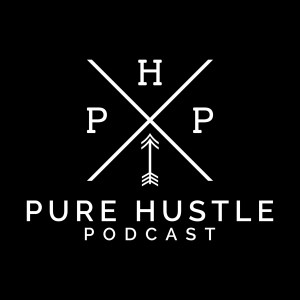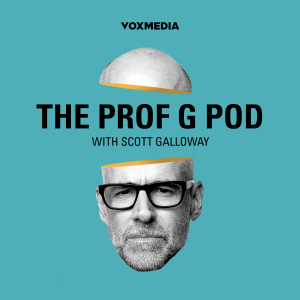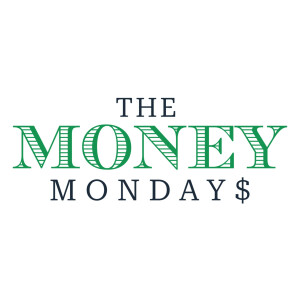

eComCatalyst - Selling on Amazon FBA and e-Commerce
https://ecomcatalyst.com/feed/podcast/Episode List

Why Amazon Warehousing & Distribution (AWD) is CRITICAL in Q4 for FBA Sellers
Reading Time: 3 minutes As the holiday season approaches, many FBA sellers face critical decisions regarding their inventory management. One of the most pressing questions is whether to utilize Amazon’s Warehousing & Distribution (AWD) services. This blog will explore the benefits of AWD, especially during the peak season, and how it can help sellers save on storage fees while ensuring a smooth sales process. Understanding the Importance of Timing Timing is everything in e-commerce, especially for sellers using Amazon’s FBA. If you’re expecting a shipment to arrive at Amazon FBA in October, the decision to use AWD becomes paramount. The key factor to consider is the anticipated sales velocity of your product. Products that are expected to sell quickly can be sent directly to FBA. If you believe your inventory will be depleted within 30 to 60 days, FBA might be the right choice. However, if your inventory will take longer to sell, AWD is undoubtedly the better option. The Impact of Peak Season Storage Fees During the peak season, which spans from Q4 to early January, Amazon significantly increases its storage fees. These fees can be astronomical compared to the regular storage rates. Understanding this can save you a lot of money and headaches. For instance, traditional FBA storage fees are manageable until peak season hits. Once that happens, they can spike dramatically. Sellers must remain vigilant about these fees, as they can impact profitability. Real-Life Consequences of Ignoring Peak Fees Many sellers have faced severe consequences due to neglecting peak season fees. One seller recounted losing over $10,000 because they didn’t account for the storage costs associated with a large shipment sent to FBA during peak season. This experience serves as a cautionary tale for all sellers. It’s essential to plan your inventory shipments strategically to avoid similar pitfalls. Advantages of Using AWD Choosing AWD offers several advantages, particularly during the peak season. Here are some key benefits: Reduced Storage Costs: AWD storage rates are significantly lower than FBA’s peak season rates, often around 70% less. Stability in Fees: AWD does not adjust its storage rates based on peak season, providing a consistent and predictable cost structure. Exemption from Additional Fees: Using AWD protects sellers from inventory placement fees and low inventory fees that Amazon imposes. When to Consider FBA Instead While AWD offers numerous benefits, there are situations where FBA might be more advantageous. If you have a product that is expected to sell out quickly, sending it straight to FBA can expedite the sales process. However, this approach comes with the risk of incurring high storage fees if the product does not sell as quickly as anticipated. Managing Auto Replenishment with AWD When utilizing AWD, it’s crucial to manage inventory effectively, especially during Q4. Many sellers opt for auto-replenishment to streamline their inventory management. However, sellers must remain vigilant, as the automated systems may not always keep up with demand. It’s advisable to monitor stock levels closely and be prepared to make manual adjustments. This proactive approach ensures that you maintain a steady flow of inventory without incurring excess storage fees. Potential Drawbacks of AWD Despite its benefits, AWD is not without its challenges. Sellers must be aware of potential drawbacks, such as: Manual Adjustments Required: The auto-replenish feature may not always function as intended, leading to potential stockouts. Longer Shipping Times: Depending on the location of your AWD warehouse, shipping times to customers may be longer compared to FBA. Conclusion: Making the Right Choice In conclusion, the decision to use Amazon’s AWD or FBA during Q4 hinges on your inventory’s expected sales velocity. If you anticipate a quick turnaround, FBA may be suitable. However, for products with slower sales, AWD is the clear choice, allowing you to save on storage costs and avoid the pitfalls of peak season fees. As Q4 approaches, sellers must remain vigilant and proactive in managing their inventory. By understanding the advantages and potential challenges of both AWD and FBA, you can make informed decisions that will lead to a successful holiday season. Call to Action If you have questions or need further insights on managing your e-commerce business, leave a comment. We love engaging with our community and are here to help you navigate the complexities of selling on Amazon. Don’t forget to subscribe to our channel for more valuable insights and tips on e-commerce and selling online!

Private Label vs Wholesale Reselling: Which Amazon FBA Business Model is BEST?
Reading Time: 5 minutes When it comes to selling on Amazon, aspiring entrepreneurs often face a crucial question: Should I resell other people’s products or create my own brand through private labeling? This debate is one that continues to ignite discussions among sellers, and understanding the nuances of each approach is vital for making an informed decision. In this article, we will explore the advantages and disadvantages of both models, providing insights that can help you choose the best path for your Amazon FBA business. Understanding the Basics: Private Label vs Wholesale Reselling Before diving into the specifics, let’s clarify what private labeling and wholesale reselling entail. Private labeling involves creating your own brand and products, typically through a manufacturer. This model allows for greater control over branding, pricing, and product quality. On the other hand, wholesale reselling consists of purchasing products from manufacturers or distributors and selling them under their existing brand names. Each model comes with its own set of challenges and opportunities. The Investment Factor: Capital Requirements One of the most significant factors influencing the decision between private labeling and wholesale reselling is the capital investment required. Starting a private label brand often demands substantial upfront costs. This includes product development, design, manufacturing, and inventory management. As such, aspiring private label sellers need to have a considerable amount of capital at their disposal. In contrast, wholesale reselling typically requires a lower initial investment. Sellers can purchase products in smaller quantities, allowing for more flexibility. This is particularly advantageous for those who may not have significant funds to commit to an entire brand launch. Therefore, if capital is a concern, wholesale reselling may be the more accessible option. Access to Products: Speed and Convenience Another advantage of wholesale reselling is the ease of access to products. When creating a private label brand, sellers must go through a lengthy process of sourcing products, obtaining samples, and managing manufacturing logistics. This can be time-consuming and may involve dealing with international shipping complexities. In contrast, wholesale resellers can often acquire products quickly. For instance, by utilizing retail arbitrage techniques, sellers can purchase discounted products from local stores and immediately list them on Amazon. This means that resellers can start generating revenue much faster than those who are launching a private label brand. Advertising and Marketing Costs In the highly competitive Amazon marketplace, advertising plays a crucial role in product visibility. For private label sellers, building brand awareness often requires a significant investment in pay-per-click (PPC) advertising and other marketing strategies. Many private label brands find themselves allocating 10-20% of their gross sales to advertising, especially in the early stages. On the other hand, wholesale resellers can benefit from the established brand recognition of the products they sell. Since customers are already familiar with these brands, there is often less need for extensive advertising. This can lead to reduced marketing costs and a more straightforward path to profitability. The Creative Factor: Skills and Ideation Creating a successful private label brand requires a certain level of creativity and strategic thinking. Sellers must be able to identify market gaps, develop unique products, and create a compelling brand story. This process can be challenging for those who may not possess strong ideation skills. In contrast, wholesale reselling allows sellers to focus on execution rather than product development. For those who excel in operations and logistics but struggle with product ideation, reselling can be a more suitable model. It eliminates the need for extensive creativity while still allowing for successful business operations. Long-Term Goals: Building an Asset One of the most compelling arguments for private labeling is the potential to build a valuable brand asset. Successful private label brands can be sold for significant multiples, providing a lucrative exit strategy for entrepreneurs. This potential for long-term growth and brand equity is often a key motivator for those choosing the private label route. While wholesale reselling can be profitable, it may not offer the same long-term asset-building potential. Resellers are often seen as intermediaries without the same level of brand recognition or customer loyalty. This distinction is essential for sellers considering their long-term goals and exit strategies. Finding Your Path: Which Model is Right for You? Ultimately, the choice between private labeling and wholesale reselling comes down to individual circumstances, goals, and preferences. For those with limited capital and a desire for quick returns, wholesale reselling may be the ideal starting point. It offers a lower barrier to entry and the ability to generate income relatively quickly. Conversely, if you have the capital, creativity, and a long-term vision, private labeling presents opportunities for brand building and significant financial rewards. It requires more effort and investment upfront but can lead to a more sustainable and profitable business in the long run. Conclusion: Making the Best Decision for Your Business In conclusion, both private labeling and wholesale reselling have their unique advantages and challenges. Understanding these factors can help you make an informed decision that aligns with your business goals. Whether you choose to create a private label brand or pursue wholesale reselling, the key is to remain adaptable and continuously learn from your experiences in the ever-evolving e-commerce landscape. For further insights and resources on excelling in e-commerce, consider subscribing to newsletters and following industry experts. Engaging with communities and learning from others can provide valuable guidance as you navigate your entrepreneurial journey. Remember, the path you choose should reflect your strengths, resources, and aspirations. Both models can lead to success if approached with the right mindset and strategies. For more information on optimizing your e-commerce business, check out eCom Catalyst and explore the resources available to support your journey.

Comfortably Numb – Episode #31
Reading Time: < 1 minute Who doesn’t love a good Pink Floyd song with perhaps one of the great guitar solos ever, right? Hello? (Hello, hello, hello)Is there anybody in there?Just nod if you can hear meIs there anyone home? This episode serves one purpose. It’s a super quick hello from Fred McKinnon to make sure that all of the fans of the former E-BusinessOnline Podcast know that we’re back. I did this podcast many years ago, back in 2018 … and then stopped. This podcast/show has been completely inactive for A WHILE! Then, we rebranded to eComCatalyst and started producing regular content on our YouTube Channel and I thought to myself “why not repurpose the audio from YouTube into a podcast”? Rather than start a brand new show, we rebranded this VERY OLD, OUTDATED podcast feed and much to our surprise, we are seeing hundreds of downloads. It seems that people stayed subscribed to the show, even though we didn’t post for years. Are these stats real? Are there really HUNDREDS of people still getting this, and all of a sudden, waking up and seeing NEW CONTENT? I wanna know … is anybody in there? Is anybody home? Can you hear me now? If so, take a quick second and zip me an email. Let me know who you are and where you are listening from, and any other fun facts you want to share. Hope to hear from you soon!Fred
![Critical Deadlines for Amazon FBA Sellers During the Peak Q4 Holiday Season [Episode 30]](https://pbcdn1.podbean.com/imglogo/dir-logo/335188/335188_300x300.png)
Critical Deadlines for Amazon FBA Sellers During the Peak Q4 Holiday Season [Episode 30]
Reading Time: 3 minutes As Q4 and the holiday season approaches, it’s crucial for Amazon FBA sellers to be aware of the key deadlines and strategies to maximize their sales potential. With Black Friday, Cyber Monday, and the Christmas selling season just around the corner, preparation is essential. This article will outline the important timelines, best practices, and tools available to ensure your products are ready for the peak shopping period. Understanding Amazon’s Deadlines for Inventory Submission Amazon has set specific deadlines for sellers to submit their inventory to FBA warehouses. Knowing these dates is vital for ensuring your products are available for customers during the busiest shopping days of the year. For 2024, the key deadline for inventory submission is October 19. October 19: Deadline for inventory to arrive at Amazon for “guaranteed” Prime availability for Black Friday. November 11 – December 29: Focus on processing orders, instead of receiving inbound shipments to FBA. These dates are critical for ensuring that your products are Prime eligible and ready for Black Friday sales. Delay in submission can lead to missed opportunities and lost sales. Importance of Early Planning While it may seem early to think about the holidays in July, early planning is essential. Amazon’s fulfillment centers become increasingly congested as the holiday season approaches, making it more challenging to get inventory checked in and available for sale. Amazon has indicated that during November and December, their primary focus will be on fulfilling customer orders rather than receiving new inventory. This shift emphasizes the need for sellers to have their products in place well ahead of the peak season. Key Planning Steps for Sellers To effectively prepare for the holiday rush, sellers should consider the following steps: Assess current inventory levels. Identify best-selling products for the holiday season. Plan your sourcing strategy well in advance. Utilize Amazon’s tools for inventory management. Monitor capacity limits and adjust shipments accordingly. Utilizing the FBA Peak Readiness Playbook Amazon provides sellers with a resource called the FBA Peak Readiness Playbook. This guide outlines best practices and strategies for managing inventory during the peak season. It’s an invaluable tool for sellers looking to optimize their operations. Key components of the playbook include: Inventory management tips Deadlines for sourcing deals Guidelines for using the FBA Capacity Monitor By leveraging this resource, sellers can better position themselves for success during the holiday season. Understanding the FBA Capacity Monitor The FBA Capacity Monitor is a crucial tool for sellers to understand how much inventory they can send to Amazon’s fulfillment centers. It helps in planning and managing your stock levels, ensuring that you do not exceed capacity limits. Here’s how to effectively use the FBA Capacity Monitor: Check limits regularly for updates. Adjust your shipments based on capacity availability. Plan for overages and avoid additional charges. Strategies for Successful Holiday Sales Beyond meeting the deadlines, there are several strategies that sellers can adopt to maximize their sales during the holiday season. Here are some effective tactics: Effective Marketing Strategies Marketing is essential to attract customers during the holiday rush. Here are some strategies to consider: Utilize Amazon Advertising for promotions. Create compelling product listings with high-quality images. Offer discounts and deals to entice buyers. Leverage social media to drive traffic to your listings. Optimize Your Listings Ensure that your product listings are optimized for search visibility. This includes: Using relevant keywords in titles and descriptions. Regularly updating your inventory and pricing. Encouraging customer reviews to build trust. Conclusion: Take Action Now! As the holiday season approaches, it’s imperative for Amazon FBA sellers to take proactive steps to ensure their products are ready for sale. From understanding deadlines to utilizing Amazon’s tools, thorough preparation can lead to a successful selling season. Don’t wait until the last minute. Start planning your inventory now, and take advantage of all resources available to maximize your sales potential. Remember, the key to success lies in early preparation and strategic planning. If you found this information helpful, consider subscribing to our channel for more insights or book a consultation with us. With over 20 years of experience in e-commerce and a proven track record of success, we’re here to help you navigate the complexities of selling on Amazon and beyond.
![Welcome to eComCatalyst: Your Partner for E-commerce Success [Episode 29]](https://pbcdn1.podbean.com/imglogo/dir-logo/335188/335188_300x300.png)
Welcome to eComCatalyst: Your Partner for E-commerce Success [Episode 29]
Reading Time: 2 minutes Hello, Fred McKinnon here! I’m excited to introduce eComCatalyst, formerly known as E-Business Online. We’ve rebranded to better reflect our mission and services in the e-commerce world. Let’s dive into who we are, what we do, and how we can help you. About Me and eComCatalyst I’m Fred McKinnon, the founder of eComCatalyst. My journey began over 20 years ago as an Amazon seller. Yes, I’ve been in the e-commerce business for more than two decades! With over $100 million in revenue through my accounts and our clients, I’ve seen and learned a lot. My e-Commerce Journey It all started with a $99 investment in a drop-ship directory. From there, I opened an Amazon zShop, which preceded Amazon Seller Central. I uploaded my first spreadsheet and began making sales. My business thrived, transitioning from drop-shipping to wholesale, FBA flips, and eventually private labeling. This journey taught me invaluable skills in sourcing, negotiating, and understanding logistics. The Birth of eComCatalyst With extensive knowledge, I began offering one-on-one consulting. This was the beginning of E-Business Online. As we grew, it became clear that we needed a name and brand that matched our vision. Enter eComCatalyst, a full-service e-commerce marketing agency. Our mission is to be your TRUSTED E-Commerce PARTNERS to be the CATALYST for your BRAND’s Success! Services We Offer At eComCatalyst, we provide a comprehensive range of services: Full-Service E-commerce Management: We act as an extension of your team, handling everything from listing creation and optimization to SEO, product research, and market analysis. Graphic Design: Our in-house team creates compelling images, infographics, A+ content, and beautiful storefronts for Amazon and other platforms. Logistics Management: We manage inventory replenishment for Amazon, Walmart, and other marketplaces. Compliance and Account Support: We have specialists with insider knowledge of Amazon Seller Support to handle any issues you face. PPC Management: Our team has been managing Amazon PPC since its inception, delivering top-notch campaigns. We tailor our services to fit your needs, whether you require full management or specific support like PPC. The eComCatalyst Difference What sets us apart is our family-oriented approach. When you work with us, you get a partner who cares about your business as much as you do. We see our clients as family and are dedicated to building lasting relationships. Free Resources Not ready for full-service management? We offer plenty of free resources to help you: Newsletter: Sign up for our newsletter for tips and updates. Complimentary Consulting: Book a free 15-minute consulting session. YouTube Channel: Check out our YouTube videos for valuable insights on Amazon, Walmart, Etsy, TikTok Shop, and more. Join the eComCatalyst Family Thank you for considering eComCatalyst. We look forward to helping you achieve e-commerce success. Follow us on our journey and become part of our growing family. To get in touch, email us at partners@ecomcatalyst.com, visit our website, or connect through our social media channels. Don’t forget to subscribe to our YouTube channel and sign up for our newsletter for the latest tips and strategies. Together, let’s make your e-commerce dreams a reality. Welcome to eComCatalyst!
You may also like
Create Your Podcast In Minutes
- Full-featured podcast site
- Unlimited storage and bandwidth
- Comprehensive podcast stats
- Distribute to Apple Podcasts, Spotify, and more
- Make money with your podcast



![Finding Peak [Formerly The Ryan Hanley Show]](https://pbcdn1.podbean.com/imglogo/dir-logo/3346886/3346886_300x300.jpg)







